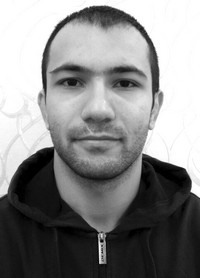Features of physical training of students of a special medical group in the conditions of a streaming form of education
Keywords:
special medical group, physical education, health-improving swimming, swimming for SMG, students' dis- eases, students' contingent.Abstract
Objective of the study was to develop and test the methodology of physical training of students of a special medical group, taking into account their characteristics in the conditions of streaming training.
Methods and structure of the study. During the experiment, the proportion of SHG students from the total number of students was determined. The diseases of students were identified, and then grouped according to nosological groups (dis-eases of the cardiovascular system, musculoskeletal system, etc.). On the basis of the data obtained, a methodological
approach was developed for working with students of the SMG. The study was conducted at the department of "Physical Education" of the Bauman Moscow State Technical University.
Results and conclusions. A methodology for practicing health-improving swim-ming with students with musculoskeletal
disorders, cardiovascular diseases and eye diseases (more than 70% of the total SMG contingent) has been developed and tested, which is based on swimming with phased training. The technique consists in fifteen weeks of swimming training, with a gradual soft increase in loads and a phased learning of swimming techniques. The optimal intervals
of rest and work in the water were determined separately for students with diseases of the cardiovascular system, separately for those studying with diseases of the musculoskeletal system, and separately for students with eye diseases.
References
Ivanov K.V. Effektivnost zanyatiy plavaniyem so studentami spetsialnoy meditsinskoy gruppy [The effectiveness of swimming lessons with students of a special medical group]. Vestnik sportivnoy nauki. 2009. No.1. pp. 56-58.
Kardamonova N.N. Plavaniye: lecheniye i sport [Swimming: treatment and sport]. Rostov on Don: Feniks publ., 2001. Vol. 137 p.
Velichko T.I., Mikhailyuk E.I. Opredeleniye indeksa fizicheskogo zdorovya i analiz stressoustoychivosti u studentov spetsialnoy meditsinskoy gruppy MGTU im. N.E. Baumana [Determination of the index of physical health and analysis of stress resistance in students of the special medical group of the Bauman Moscow State Technical University]. Zhivaya psikhologiya. 2018. No. 1. pp. 25-32.
Melnikova O.A. Metodika differentsirovannogo obucheniya plavaniyu studentov spetsialnoy meditsinskoy gruppy s uchetom fenotipa [Methods of differentiated swimming training for students of a special medical group, taking into account the phenotype]. PhD diss.. Tyumen, 2007. 191p.
Svishchev I.D., Tambovtseva R.V., Cheremisinov V.N. et al. Vliyaniye vzualnogo myshleniya na pokazateli serdechnososudistoy sistemy organima cheloveka [Influence of visual thinking on indicators of the cardiovascular system of the human body]. Teoriya i praktika fiz. kultury. 2019. No. 6. pp. 52-54.

Additional Files
Published
Versions
- 07-04-2022 (3)
- 05-04-2022 (2)
- 05-04-2022 (1)

